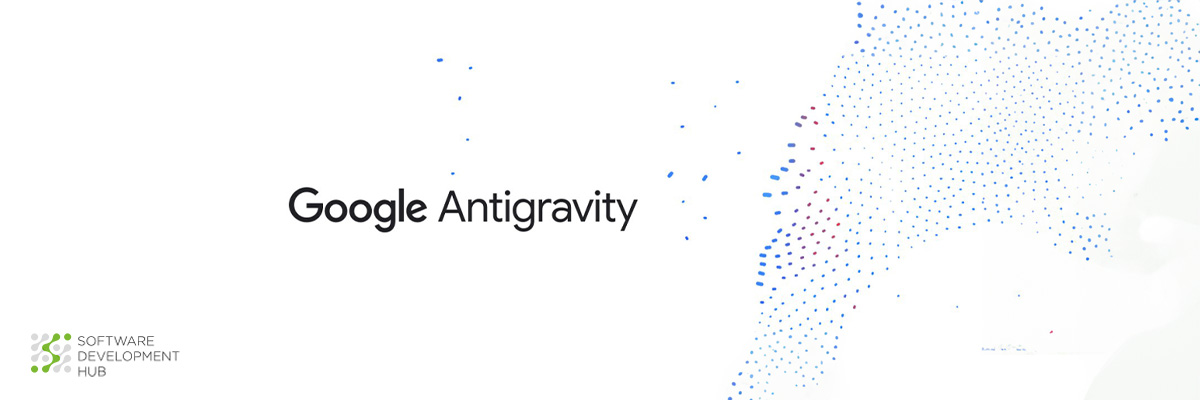Model Context Protocol: A Visual Architecture Guide for Developers
Have you ever struggled with connecting your AI models to various data sources and tools? The Model Context Protocol (MCP) offers a standardized solution to this common development challenge. As an open protocol, MCP enables developers to build secure, two-way connections between their data sources and AI-powered tools.
What makes MCP particularly valuable for development teams?
We will explore the architecture of Model Context Protocol, examine how it works, and look at real-world implementations. Whether you're new to MCP or looking to understand its technical foundation, this article will provide the knowledge needed to implement this protocol in AI development projects.
Understanding the NxM Problem in LLM Integration
The integration of Large Language Models (LLMs) into existing tools and services has created a significant challenge for developers. This problem, commonly referred to as the "NxM problem," represents one of the most persistent roadblocks in AI development today.
Redundant Development Across AI Models and Tools
The NxM problem occurs when N different AI models require unique integrations with M different tools or data sources. As one developer aptly described it, "Open source doesn't mean zero effort. It just means someone else did the upstream heavy lifting. You still have to get the thing working in your system, for your data, at your latency, under your constraints". This creates a multiplication effect where each new model or tool exponentially increases the number of integrations needed.
Consider this practical analogy: it's similar to how each cell phone once had its own charging port. If you had five types of AI models and five different tools, you would need 25 different integrations to keep everything connected—a developer's nightmare.
This redundancy creates several critical issues:
- Duplicated code and wasted effort: Teams repeatedly build similar integrations for different models
- Increased development time: The same integration problems must be solved repeatedly
- Technical debt accumulation: Studies show redundant code makes systems harder to maintain, scale, and update
- Resource drain: Engineering hours are consumed by repetitive integration tasks rather than innovation
Development teams often discover that when open-source LLMs prove successful in one department, other divisions immediately request their own implementations. As one expert noted, "All of a sudden, you get Marketing running one model, R&D playing with 3 more, Product trying to integrate a fifth, and Engineering stuck supporting all of it". This organizational enthusiasm compounds the technical complexity exponentially.
Fragmented Implementations and Maintenance Overhead
Beyond the initial development challenges, fragmented implementations create substantial maintenance burdens. Every custom integration requires ongoing support and monitoring, especially as both LLMs and connected tools evolve. Research indicates that 91% of machine learning models degrade over time, creating an escalating maintenance challenge.
AI tools implemented in isolation often fail to communicate effectively with other systems. This leads to data silos, inconsistent behaviors, and fragile connections where even small API changes can break entire workflows. Managing multiple fragmented AI solutions significantly increases IT complexity, raising questions about handling integrations and upgrades without introducing cybersecurity risks.
The overhead extends beyond technical concerns to business outcomes. Industry data shows nearly 30% of teams cite integration and workflow inefficiencies as their top frustration. Teams spend more time maintaining disconnected tools than solving actual business problems, leading to underutilized resources and stalled innovation.
Why a Standard Protocol is Needed
The solution to this growing complexity lies in standardization. Rather than building custom integrations for every combination of model and tool, a universal protocol can dramatically simplify development. The model context protocol (MCP) addresses this challenge by providing "a universal, open standard for connecting AI systems with data sources, replacing fragmented integrations with a single protocol".
MCP eliminates "the need for developers to write redundant custom integration code every time they need to link a new tool or data source to an AI system". Instead of maintaining separate connectors for each data source, developers can build against a standard protocol that works across multiple models and tools.
This standardization offers several compelling advantages:
- Reduced development time and costs
- Easier switching between LLM providers
- More sustainable architecture as systems scale
- Less brittle connections between systems
For AI to remain viable compared to a series of independent applications, "data must be managed with increased specificity linked to business value rather than as a grouping of single-celled organisms". The Model Context Protocol represents precisely this evolution—a foundation upon which interconnected AI systems can be built without the redundant development and maintenance overhead that has plagued previous approaches.
Model Context Protocol Architecture Explained
The Model Context Protocol follows a structured architecture that enables AI systems to communicate with external data sources through standardized mechanisms. This architecture directly addresses the integration challenges we discussed by providing a universal interface for connecting diverse systems.
MCP Client and Server Roles
The model context protocol utilizes a client-server architecture where an MCP host establishes connections to one or more MCP servers. This design involves three primary components that work together:
- MCP Host: The AI application (like Claude Desktop or Claude Code) that coordinates multiple MCP clients
- MCP Client: A component within the host that maintains a dedicated connection with an MCP server
- MCP Server: A program that provides context to MCP clients, regardless of where it runs
Consider a practical example: when Visual Studio Code acts as an MCP host and connects to the Sentry MCP server, the runtime creates an MCP client object to maintain this connection. If it subsequently connects to a local filesystem server, another MCP client is instantiated, establishing a one-to-one relationship between clients and servers.
MCP servers can operate either locally on the same machine or remotely on different infrastructure. Local servers typically run on the same device as the client, whereas remote servers operate on separate platforms. This flexibility allows organizations to choose deployment strategies that best fit their security and performance requirements.
Transport Layer: STDIO vs HTTP+SSE
The transport layer manages communication channels between clients and servers, handling connection establishment, message framing, and secure transmission. MCP supports two primary transport mechanisms, each optimized for different scenarios:
- STDIO Transport: Uses standard input/output streams for direct process communication between local processes, offering optimal performance with no network overhead
- Streamable HTTP Transport: Employs HTTP POST for client-to-server messages with Server-Sent Events for streaming capabilities, enabling remote server communication
STDIO transport excels in local scenarios requiring minimal latency and simple deployment, making it ideal for command-line tools and desktop applications. HTTP+SSE works best for remote access across networks, supporting multiple concurrent clients and centralized deployments.
The performance difference between these transports is substantial. STDIO typically achieves microsecond-level response times and 10,000+ operations per second, whereas HTTP generally handles 100-1,000 operations per second due to network overhead. This performance gap makes transport selection crucial for application requirements.
How the Model Context Protocol Works in Practice
The model context protocol operates through a series of well-defined steps that enable seamless communication between AI models and external systems. Unlike traditional integration methods, MCP creates a standardized flow that remains consistent regardless of which models or tools are connected.
Protocol Handshake and Capability Discovery
When an MCP client connects to a server, they perform a capability negotiation handshake. This process begins with the client sending an initialize request containing its protocol version (e.g., "2025-06-18") and supported capabilities. The server responds by sharing which features it supports, including primitives like tools, resources, or prompts. This exchange ensures compatibility and prevents errors from version mismatches. Following this exchange, dynamic discovery allows the client to explore available tools by sending a tools/list request.
The handshake process eliminates guesswork about what capabilities are available. Rather than hardcoding assumptions about server features, clients can dynamically adapt to different server implementations.
Tool Invocation and Permission Flow
Once capabilities are established, the actual work begins. When deciding to use a tool, the language model generates a structured request. For example, if a user asks "Find the latest sales report in our database and email it to my manager," the process unfolds as follows:
- The LLM recognizes it needs external help and searches for relevant tools
- It locates appropriate tools (e.g., database_query and email_sender)
- It generates a structured request to the database_query tool first
- The MCP server executes the query and returns the report data
- The LLM then calls the email_sender tool with the report content
Prior to executing tools, most implementations require user permission through OAuth-based authorization. This human-in-the-loop design prevents unauthorized actions and maintains security.
What makes this approach particularly effective? The standardized request format means the same interaction pattern works across different tools and servers, reducing the complexity that developers face when building integrations.
Context Integration and Response Generation
As tools complete their operations, they return results to the LLM through standardized response formats. These responses can include multiple content types (text, images, resource links) with optional annotations. The model then integrates these results into its context to generate comprehensive responses. This integration is crucial because it allows the AI to maintain continuity throughout complex multi-step operations.
The response integration process enables sophisticated workflows where the output from one tool becomes the input for another. This creates a chain of operations that can handle complex business processes without requiring custom integration code for each step.
MCP provides a consistent interface that eliminates the need for custom code between each model-tool combination, directly addressing the integration challenges we discussed earlier.
Real-World Examples of MCP Clients and Servers
The practical value of Model Context Protocol becomes clear when examining its current implementations across various platforms and services. Today's ecosystem features numerous clients and servers that demonstrate MCP's versatility in production environments.
Claude Desktop and Claude Code as MCP Clients
Claude Desktop serves as a primary gateway for experiencing MCP, offering a chat interface to Anthropic's latest models on both macOS and Windows. As an MCP client, it can connect to hundreds of external tools and data sources through a standardized configuration process. Claude Code functions simultaneously as both an MCP client and server - as a client, it connects to external MCP servers, yet it can also serve as an MCP server itself, exposing tools like Bash, Read, Write, and Edit to other clients.
GitHub, Supabase, and Apify as MCP Servers
GitHub's MCP server provides AI tools direct access to GitHub's platform capabilities, enabling repository management, issue and PR automation, CI/CD workflow intelligence, and code analysis through natural language interactions. Supabase's MCP server connects AI tools to its platform, allowing them to launch databases, manage tables, fetch configuration, and query data. Their server offers over 20 tools, including table design with migration tracking and SQL query execution.
Apify's MCP server takes a different approach, allowing AI assistants to use any Apify Actor as a tool, effectively providing access to over 5,000 public tools from the Apify Store. This scale demonstrates how MCP can unlock entire ecosystems of existing tools without requiring individual integrations.
Community Servers: Docker, Discord, HubSpot
Docker's MCP Toolkit stands out by offering access to more than 200 MCP servers through Docker Desktop. This free feature isolates servers in containers, enables secure configuration, and provides security checks for both tool calls and outputs. HubSpot offers two distinct MCP servers: the HubSpot MCP server for CRM data access and the Developer MCP server for interacting with the HubSpot Developer Platform. Discord has also joined the MCP ecosystem, allowing integration between AI systems and Discord's communication platform.
These implementations showcase how MCP facilitates connections between AI systems and external tools without requiring custom integrations for each combination. The growing number of available servers indicates increasing industry adoption of the protocol as a standard for AI tool integration.
Security and Extensibility in MCP Deployments
Security represents a critical consideration for organizations deploying MCP servers in production environments. Recent security research revealed concerning vulnerabilities, with nearly 2,000 exposed MCP servers lacking any authentication, creating potential data exfiltration risks. These findings highlight the importance of implementing robust security measures from the outset.
OAuth Resource Server Classification
The June 2025 update to the MCP specification formally classifies MCP servers as OAuth Resource Servers. This classification introduces protected resource metadata, allowing servers to advertise their corresponding Authorization Server location. The implementation of Resource Indicators (RFC 8707) enables clients to explicitly state the intended recipient of access tokens.
This approach prevents malicious servers from repurposing tokens to access different protected resources. The classification brings MCP deployments into alignment with established OAuth security patterns, providing a familiar framework for authentication and authorization.
Progressive Scoping and Client ID Metadata
Progressive scoping represents a fundamental security principle in MCP implementations, focusing on what a tool intends to accomplish and whether it has the necessary permissions. This approach minimizes access scope through:
- Minimal initial permission sets containing only low-risk operations
- Incremental elevation via targeted challenges when privileged operations are attempted
The Client ID Metadata Document (CIMD) extension enhances security by allowing clients to host their metadata at a URL. Rather than using random strings as client IDs, the identifier becomes an HTTPS URL pointing to a JSON document describing the client. This method reduces registration overhead while providing clearer, more trustworthy identity signals.
Human-in-the-Loop Design for Safer AI
Human-in-the-Loop (HITL) forms an essential security layer in MCP implementations. The specification explicitly states: "For trust and safety, applications SHOULD present confirmation prompts for operations". HITL isn't simply a fallback mechanism—it represents deliberate design ensuring humans retain control at critical decision points.
Effective HITL implementations follow established patterns:
- Interrupt & Resume: Pausing execution for human input before proceeding
- Approval Flows: Structuring permissions so specific human roles must approve actions
The intervention intensity should match action risk—low-risk, reversible tasks can operate freely, while high-stakes operations require explicit approval. This approach helps prevent incidents like Replit's painful misfire when an AI agent accidentally deleted 1,200 production database records.
What makes these security measures particularly important? MCP servers often handle sensitive data and perform critical operations across multiple systems. The protocol's design acknowledges that security cannot be an afterthought—it must be built into the foundation of every implementation.
Conclusion
Model Context Protocol represents a fundamental shift in how AI systems connect with external data sources and tools. Throughout this guide, we have examined how MCP effectively addresses the NxM integration problem that has historically challenged AI development teams. Rather than building custom connections for each model-tool combination, developers can now implement a single, standardized protocol that works universally.
The client-server architecture of MCP, coupled with its flexible transport options and JSON-RPC communication standard, provides a robust foundation for connecting AI systems to the external world. This architecture allows teams to swap models, upgrade tooling, and manage context flow without extensive refactoring of their entire technology stack.
Real-world implementations from major platforms like GitHub, Supabase, Apify, and Docker demonstrate MCP's practical value across diverse use cases. These examples show how the protocol facilitates seamless connections between AI models and external tools without requiring custom integrations for each combination. Additionally, the emphasis on security features such as OAuth integration, progressive scoping, and human-in-the-loop design ensures responsible AI deployment.
Looking ahead, MCP will likely become an essential component in the AI development toolkit. The protocol's open nature fosters an ecosystem where developers can focus on creating valuable tools and models rather than struggling with redundant integration work. Teams adopting MCP can expect reduced development time, lower maintenance overhead, and more sustainable architecture as their AI systems scale.
Undoubtedly, standardization through protocols like MCP represents a necessary evolution as AI becomes increasingly embedded in our software systems. Much like how USB replaced proprietary charging cables, MCP offers a universal connection standard that simplifies development while expanding capabilities. For developers working on AI integration projects, understanding and implementing MCP provides a clear path forward through the complex landscape of model-tool connections.
Categories
About the author
Share
Need a project estimate?
Drop us a line, and we provide you with a qualified consultation.







